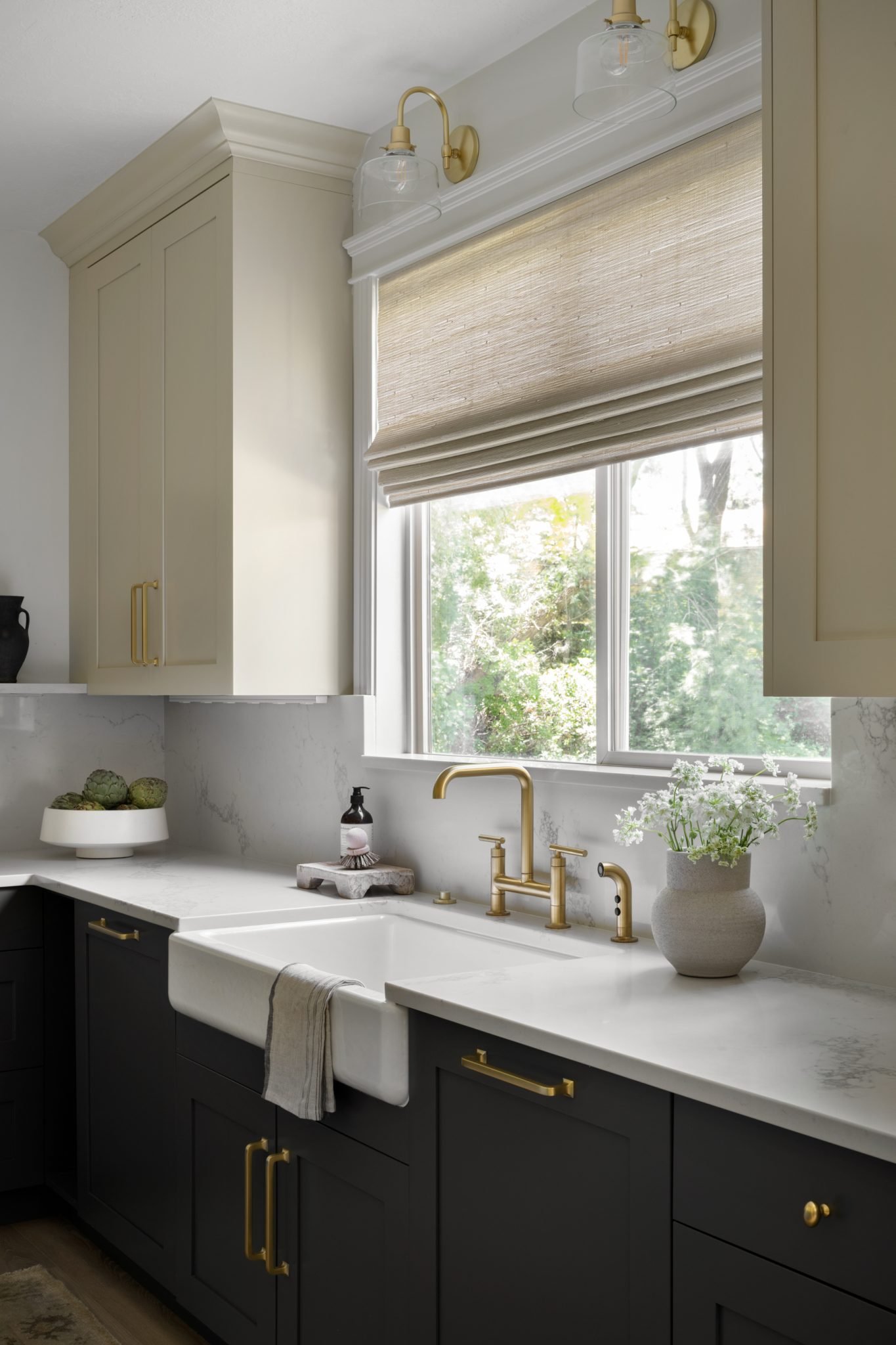The Countertop Guide
Our Countertop Guide
Equipping you with all of the need-to-knows when it comes to selecting your countertop material.
Countertop surfaces have come a long way since the days of Formica, the plastic building material that was once all the rage.
With all the countertop options out there now, it can be tough to know what material is going to be best for your style and your lifestyle. So, we put together a list of pros and cons for the different countertop materials (and countertop edge profiles, too) so you can pick the perfect surface for your spaces with confidence. Read below for our countertop guide that equips you with all of the need-to-knows when it comes to selecting your countertop material.
Marble
PROS
Natural stone
Timeless
Heat resistant
Wide range of colors and styles
Can be polished or honed
Often considered the most designer look of all options
CONS
Porous surface, meaning it can stain and etch
Scratches and chips
Wide range of price points depending on the type
Requires sealing and maintenance
See marble countertops in our AGH Country House Project and AGH Farmhouse Project
Quartz
PROS
Engineered material
Stain, scratch, impact, and heat-resistant
Variety of colors and styles
Nonporous
No maintenance required
CONS
Designed to mimic natural stone, but it never will be
Natural stone has a cold temperature to the touch, but quartz has a more manufactured feel
Not a one-of-a-kind selection, which can feel impersonal
Extra caution should be taken for exposure to excessive heat that can cause damage
See quartz countertops in our Water Street Project & Sill Lane Project
Quartzite
PROS
Natural stone
Heat resistant
Variety of colors and styles
When sealed it is more durable than marble
CONS
Requires maintenance to be sealed
Can be costly depending on the slab
Soapstone
PROS
Natural stone
Timeless
Does not need to be sealed
Heat resistant
Easy to disguise surface scratches with readily accessible products
Typically cost-effective
CONS
Susceptible to scratches and nicks
Narrow range of colors, from gray to black
See soapstone countertops in our Stone House Project
Butcher Block
PROS
Adds warmth and character
Great for baking
Timeless
Cost-effective
CONS
Requires regular maintenance
Scratches and dents easily
See butcher block countertops in our Selden Antique Project
Concrete
PROS
Modern aesthetic
Stain, heat, and water-resistant when sealed
Customizable thickness, profiles, colors, and textures
CONS
Ages over time
Prone to stains, scratches, chips
Requires maintenance
Granite
PROS
Natural stone
The most heat-resistant natural stone
Non-porous after it is sealed
Wide range of colors and options
Cost-effective
CONS
Speckled appearance versus veining
Porous if not properly sealed
See granite countertops in our Farmhouse Stay: At A Good Home Project + Stone House Project
Porcelain
PROS
Engineered stone made from clay-based materials
Veining and colors are very realistic
Non-porous, scratch and stain-resistant
Slabs are offered in large sizes
Cost-effective
CONS
Edge styles are limited
Thin material, so seaming on edges can be more obvious
Countertop Edge Profiles
There are a few things to consider when it comes to choosing a countertop edge profile - the function of the space (some profiles are easier to keep clean than others), what the material is (certain materials only have a few edge profile options), and the overall style you’re going for. Below we’re sharing the most common edge types and where/how to use them.
DESIGN TIP If you’re choosing a natural stone slab (quartzite, marble, granite, soapstone), you are able to use all of these edge styles, but for something that isn’t solid throughout or may be prone to cracking (like a quartz, laminate, ceramic, or porcelain) to be safe you’ll want to double check with your fabricator about your options or use a square edge when in doubt.
Square / Flat Edge—This is the most simple and maybe the most common edge profile. It feels a little more modern and sleek but is a great option in any style of home. Also the least expensive type of edge because it’s not as intricate.
Ogee Edge—Ogee edges use two soft curves to create a rounded “S” shape. The hardness of the curve can be varied from a subtle wave to a more dramatic profile.
Bullnose Edge—One of the simplest designs you’ll see for countertop edges, a full bullnose edge style curves all the way around.
Ogee Bullnose Edge—Just like an ogee edge but with a rounded base instead of a flat edge.
Triple Pencil Edge—3 stacked rounded edge finish with a more traditional European look.
Cove Edge—Coved edges are a slightly sharper version of an ogee with a rounded indent that creates a grooved effect. A coved edge looks slightly less formal and more modern than an ogee.




























